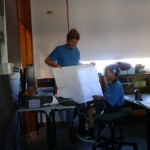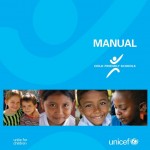UNICEF School Project
- Wakjira shows Rut how to create a soccer field
- Dino LOVES his MinecraftEdu project.
- How do you build a circle in MinecraftEdu?
- Creating transport for the school.
- Wakjira scripting his build to open and close doors.
- The happy gang!
Students can be leaders in virtual worlds, gathering knowledge and solving authentic problems. Virtual worlds allow students to engage with the curriculum content, participate in knowledge development, and achieve learning outcomes that map to real world outcomes. More importantly, students experience how problems arise and how the solution to one problem can create other problems. Students in a virtual environment have more opportunities for authentic learning than students in a traditional classroom” Virtual Worlds by Judy O’Connell and Dean Groom
The UNICEF schools project has come to a close with all the students wanting it to continue! We just do not have enough weeks in a year. This has been a fantastic experience not only for the students but also for the teachers involved. From the beginning with the introduction of a real world issue: design and build a school for a community in Afghanistan, to an architect coming in to show us how to plan and draw to scale, meeting the criteria from the UNICEF Child-Friendly School Manual, talking to Mia Cox from UNICEF Australia via Skype and the students finally gaining permission to construct their school models using Sim-on-a-Stick or MinecraftEdu. All the students involved come from very different backgrounds with very limited English speaking skills but they have been able to engage in a rich project that challenged and allowed them to achieve very successful outcomes. The great thing with this type of technology is that it differentiates accordingly and this allows all students who use it the ability to really shine.
















































